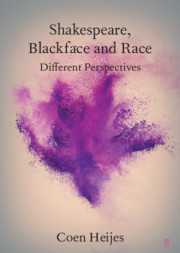Element contents
Shakespeare, Blackface and Race
Published online by Cambridge University Press: 05 October 2020
Summary
Keywords
Information
- Type
- Element
- Information
- Online ISBN: 9781108900546Publisher: Cambridge University PressPrint publication: 29 October 2020
References
Accessibility standard: Unknown
Why this information is here
This section outlines the accessibility features of this content - including support for screen readers, full keyboard navigation and high-contrast display options. This may not be relevant for you.Accessibility Information
- 17
- Cited by
